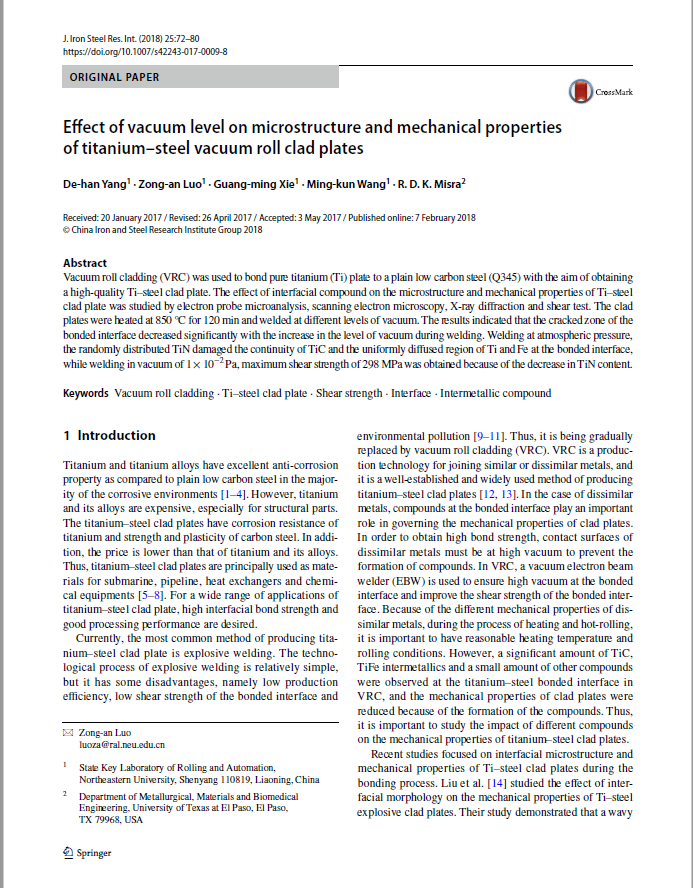Vacuum roll cladding (VRC) was used to bond pure titanium (Ti) plate to a plain low carbon steel (Q345) with the aim of obtaining a high-quality Ti–steel clad plate. The effect of interfacial compound on the microstructure and mechanical properties of Ti–steel clad plate was studied by electron probe microanalysis, scanning electron microscopy, X-ray diffraction and shear test. The clad plates were heated at 850 °C for 120 min and welded at different levels of vacuum. The results indicated that the cracked zone of the bonded interface decreased significantly with the increase in the level of vacuum during welding. Welding at atmospheric pressure, the randomly distributed TiN damaged the continuity of TiC and the uniformly diffused region of Ti and Fe at the bonded interface,while welding in vacuum of 1 × 10−2 Pa, maximum shear strength of 298 MPa was obtained because of the decrease in TiN content.
